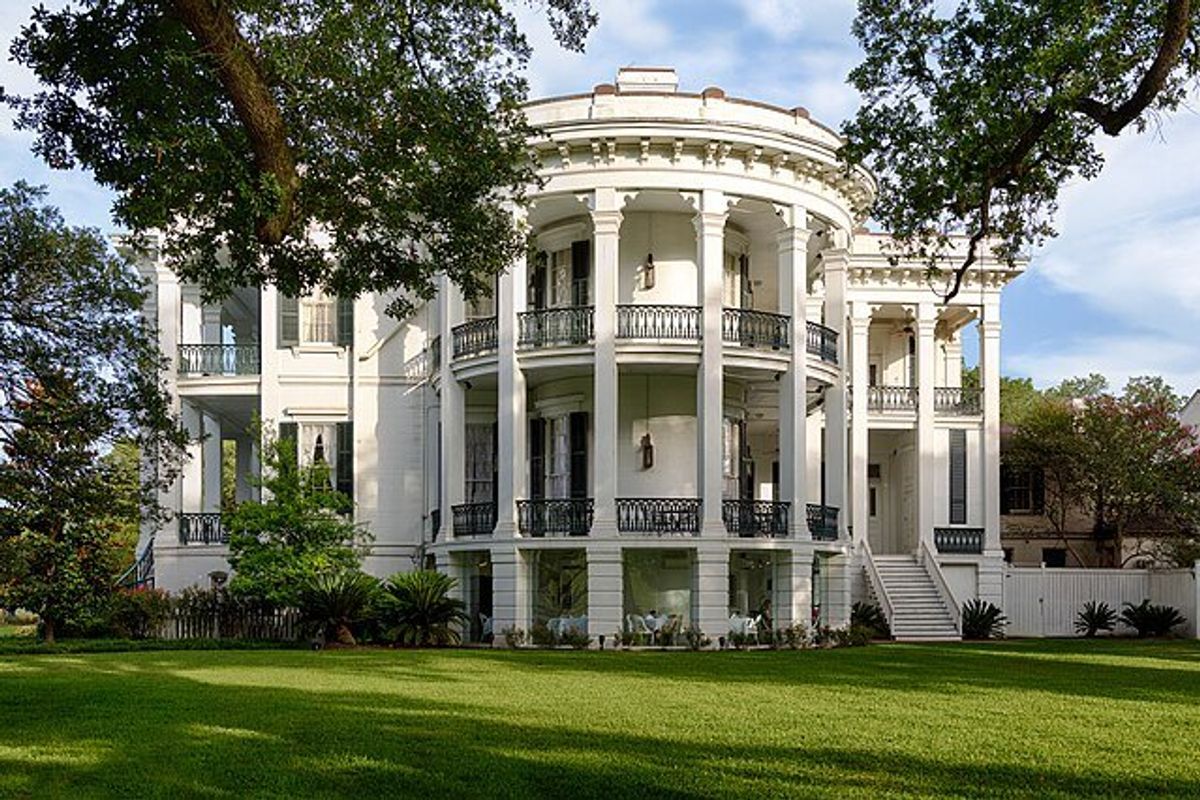A historic plantation went up in flames, but people's reactions to it are the real story
The Nottoway Plantation had been turned into a luxury event space that glossed over its history of enslavement.

The 53,000 square foot Nottoway mansion before it burned down in May of 2025.
For generations, the way Southern plantations have been portrayed and viewed by the American public has been a point of contention. For some, the sprawling grounds and grandiose mansions are viewed romantically, the beauty of them hearkening to wealthy aspirations and a nostalgic allure of Southern charm a la "Gone With the Wind." For others, plantations are a painful reminder of the plight of the Black Americans who worked the grounds and tended the crops of white plantation owners who enriched themselves off the backs of enslaved people trapped in a heinous system enforced by racism.
It's easy to see how those two perspectives can clash. And the tension between them was placed front and center on May 15, 2025, as the Nottoway Resort, the largest remaining antebellum plantation in the U.S., went up in flames. The 64-room mansion was built between 1857 and 1859 for its wealthy owner John Hampden Randolph, who enslaved 150+ people to work his sugar cane farm. As news and images of the blaze went viral, reactions were starkly divided. While some lamented the loss, others cheered with cries of "Good riddance!" and "Burn, baby, burn!"
The fact that Nottaway was marketed as a "resort" and a popular event venue, as opposed to a museum dedicated to sharing the full history of the plantation, is a big impetus behind the celebratory sentiment. Some plantations have been converted into purely educational facilities in which visitors learn how those beautiful places were built and maintained by slaves, but Nottoway wasn't one of them.
Historian and lecturer on the history of slavery Dr. Andrea Livesey visited Nottoway in 2019 and was horrified by how the slavery history was glossed over.
The plantation does have a museum, Livesey shared, which only included one board about slavery. "It tells visitors that 'various records indicate they were treated well for the time," she wrote, adding that those records likely all came from the enslavers.
Even the Nottoway website is thoroughly lacking in historical information. As of the day of the fire, the History section of the website shares details about the 16 historic oak trees on the property. That's it. (There's literally nothing else about the property's history, which is an odd choice.)
But it's the drastically different reactions to the mansion's destruction that mark this moment in time more than anything else. Over 150 years after slavery was officially abolished, we are still grappling with that history, intellectually and viscerally. In some cases, we learned drastically different versions of that part of our history, which of course doesn't help. But even if we're looking at the same exact historical record in its accurate entirety, we see that history through different lenses colored by our individual and familial histories, experiences, and biases.
What shouldn't be hard to see is the pain that enslavement caused generation after generation of Black families and how plantations being relished in for their architectural beauty while ignoring how and why they were built and the atrocities that took place on them could feel like a slap in the face. Even the elementary knowledge of the history of slavery in American ought to make that clear.
But many Americans have been conditioned to downplay the history of slavery, as if it wasn't the long atrocity that it was. Is holding a wedding or a party at a plantation markedly different than throwing a picnic at Auschwitz because the train station makes a beautiful backdrop? Some would argue it's not.
And yet, some people are sad to see the mansion burn, lamenting the loss of its magnificent architectural grandeur. Instead of "Yes, it's beautiful, but the slavery part ruins it," some see it as, "Yes, slavery was terrible, but it's still a beautiful building." Whether those are equally valid perspectives or not, those different lenses is where much of the debate over slavery-era historical places and monuments lies.
Marketing a plantation as a luxury event space while ignoring its oppressive history feels wrong. But does watching it burn to the ground feel right? For some, it definitely does, which begs some questions: What role do visceral feelings have in the debate over what to do with places and things that were created via and for the perpetuation of slavery? What role does white supremacy still play in who gets to make those decisions? Is it possible to turn a plantation into a place where everyone feels like their ancestral history is being honored? These and other questions need serious consideration and discussion as America continues to reckon with its own history.
One plantation that has been turned into an educational monument seems to have struck a reasonable balance. Less than an hour's drive from Nottoway, the Whitney Plantation is a non-profit museum "dedicated to truth-telling about America's past." It does not shy away from its history, but rather invites visitors to dive in. Like Nottoway, Whitney was primarily a sugar plantation, which made it all the more tragic for the enslaved people forced to work there. Sugar was a particularly brutal crop. The life expectancy for slaves on sugar cane farms was dramatically lower than those on cotton plantations—around 7 years—and being sold to Louisiana for sugar production was often considered a death sentence.
Knowing that full history, it's hard to see a plantation used as a resort and event venue and it's understandable that people might revel in its demise. Would there be the same kind of sentiment if Whitney burned? Probably not, or at least not to the degree that Nottoway's destruction has seen. Perhaps now's a prime time to discuss the respectful, appropriate ways to handle historic places with problematic histories, to let the ashes of the past fertilize our collective future.



 Worried mother and children during the Great Depression era. Photo by Dorthea Lange via Library of Congress
Worried mother and children during the Great Depression era. Photo by Dorthea Lange via Library of Congress  A mother reflects with her children during the Great Depression. Photo by Dorthea Lange via Library of Congress
A mother reflects with her children during the Great Depression. Photo by Dorthea Lange via Library of Congress  Families on the move suffered enormous hardships during The Great Depression.Photo by Dorthea Lange via Library of Congress
Families on the move suffered enormous hardships during The Great Depression.Photo by Dorthea Lange via Library of Congress



 Dark flies and wild fruit flies look almost identical, but have significant genetic differences. Photo by
Dark flies and wild fruit flies look almost identical, but have significant genetic differences. Photo by  The project has been passed down from researcher to researcher for 70 years. Photo by
The project has been passed down from researcher to researcher for 70 years. Photo by